.
14.07.2015 / 9.00 MESZ

NEW HORIZONS in Cleanroom
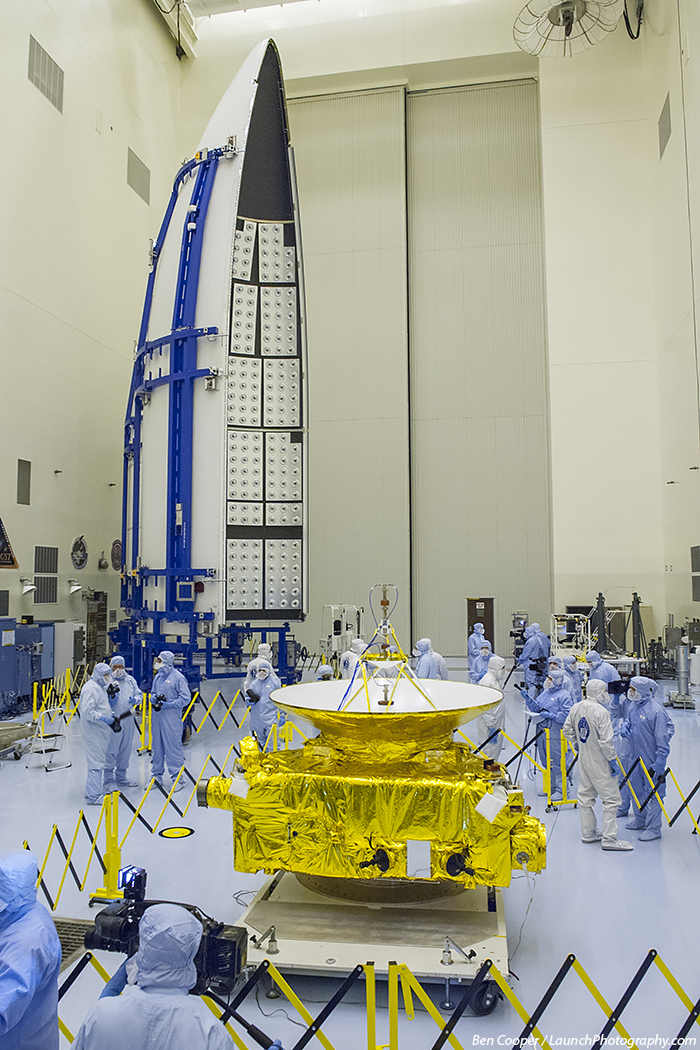
Quelle: SN

Planet Or Not, Icy Pluto To Finally Get Its Day In The Sun
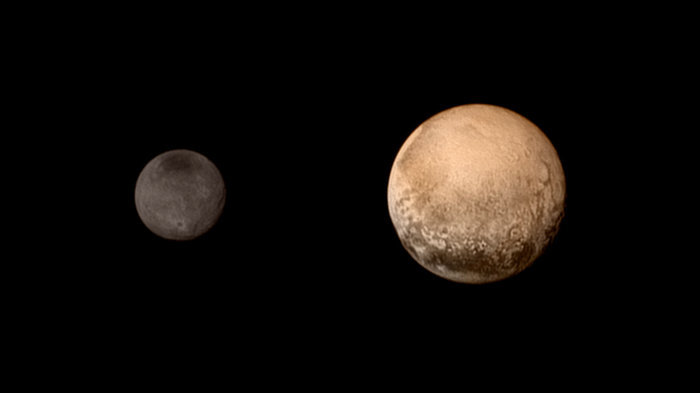
A portrait of Pluto (right) and its moon Charon in a colorized, composite image made July 11 during the final approach of the New Horizons spacecraft. Astronomers are eager to get a much closer view of the icy world Tuesday.
NASA-JHUAPL-SWRI
Alice Bowman oversees daily operations for NASA's mission to Pluto. Her language is peppered with technical terms — like "astronomical units" and "aim points."
But there's one piece of scientific nomenclature you won't hear coming from Bowman's lips: dwarf planet.
"Pluto is a planet," she says. "And that's the way I will always think of it."
Pluto was relegated to dwarf planet status in 2006, just months after the spacecraft that Bowman manages, called New Horizons, began its 3 billion-mile journey to pay a visit. New Horizons will fly past Pluto on Tuesday, sending back detailed images and scientific measurements of the icy world.
Pluto's Dwarf Status 'Unscientific,' Some Say
The change in Pluto's designation came after a vote by members of the International Astronomical Union, the world's leading group of astronomers. At a meeting in Prague, the group adopted a definition called "Resolution 5A," which kicked Pluto out of the planetary club.
But some of the scientists working on New Horizons have never fully accepted the change. Alan Stern, the mission's principal investigator, says the reclassification was a knee-jerk reaction to events at the time. In the 1990s, astronomers began detecting planets around other stars. Then in the mid-2000s, they started to find more and more planet-like objects beyond Pluto, at the edge of our solar system.
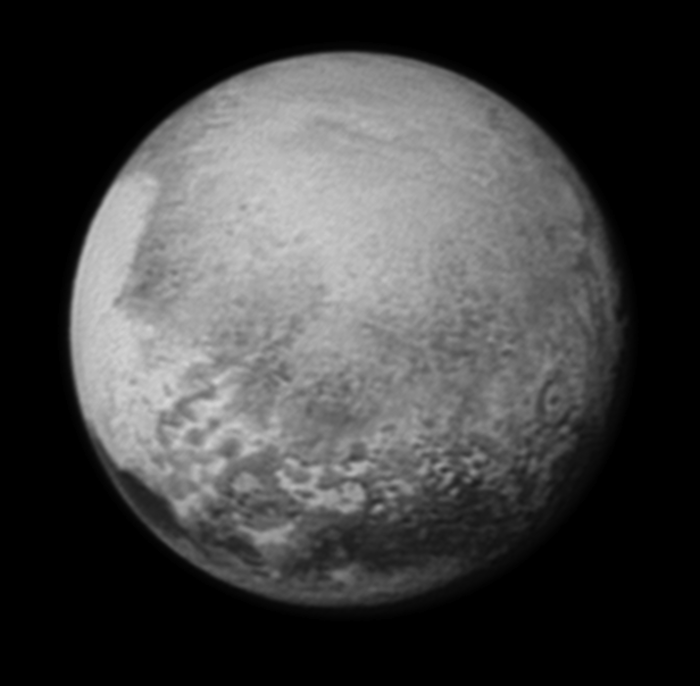
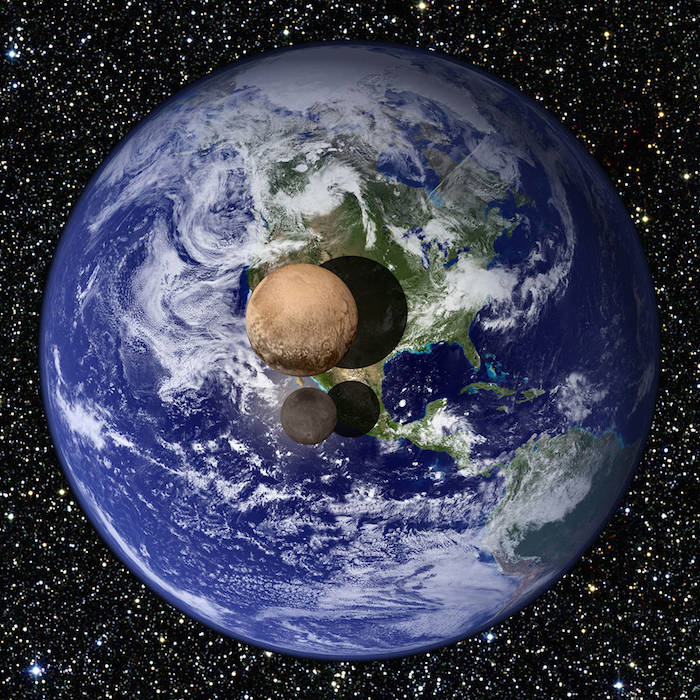
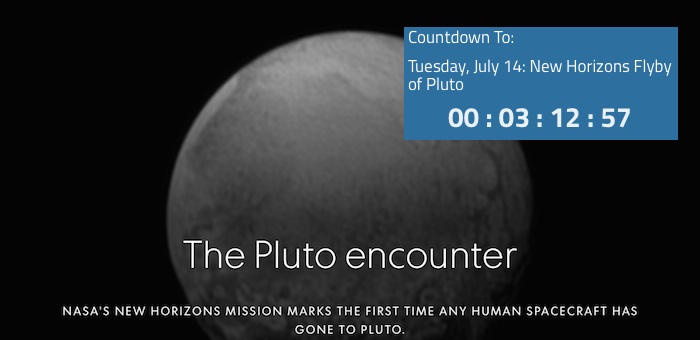
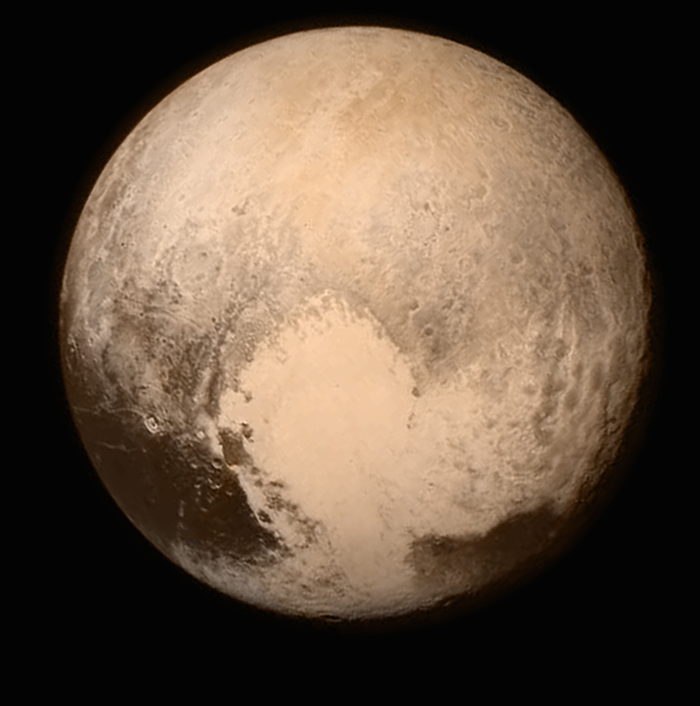
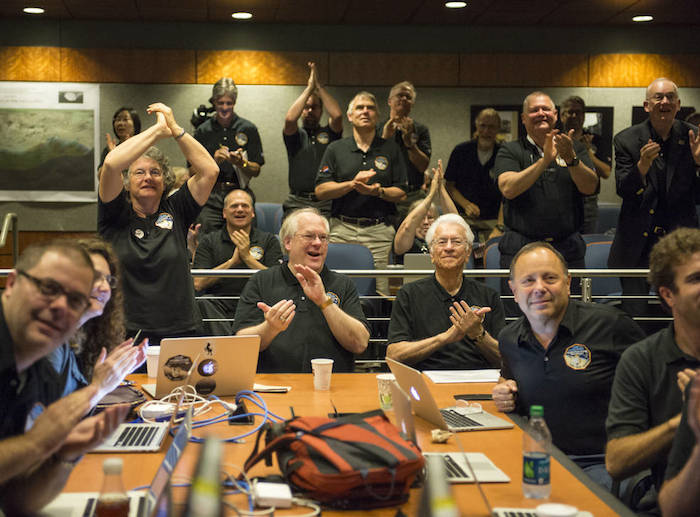
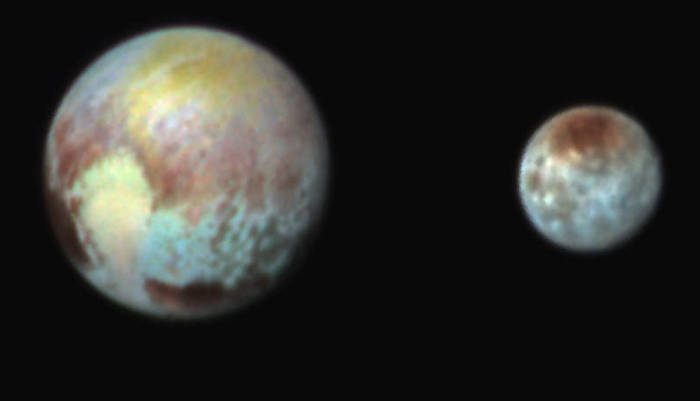

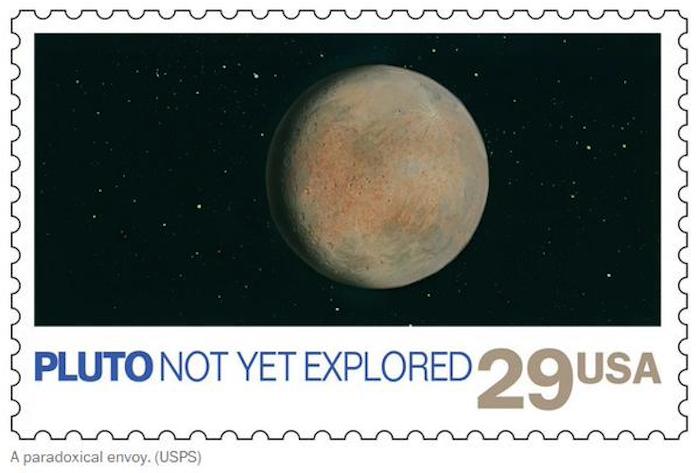
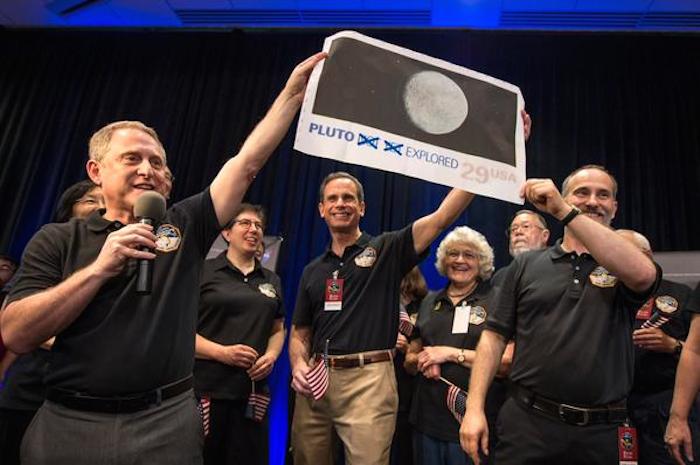
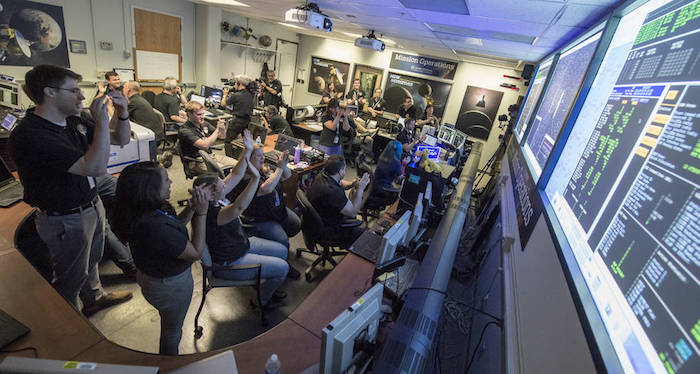
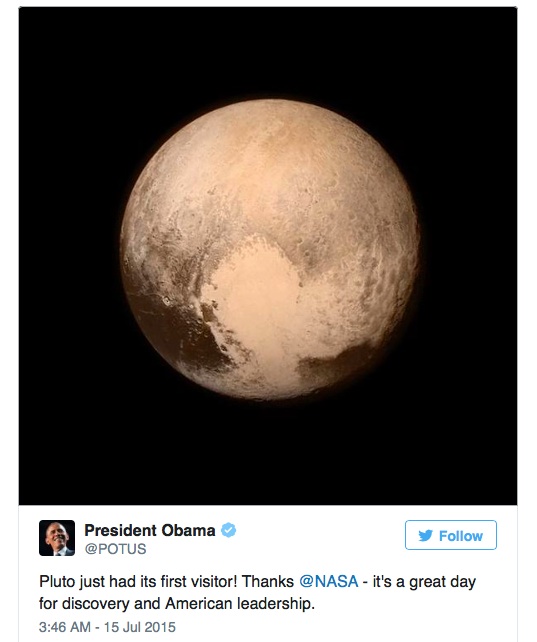
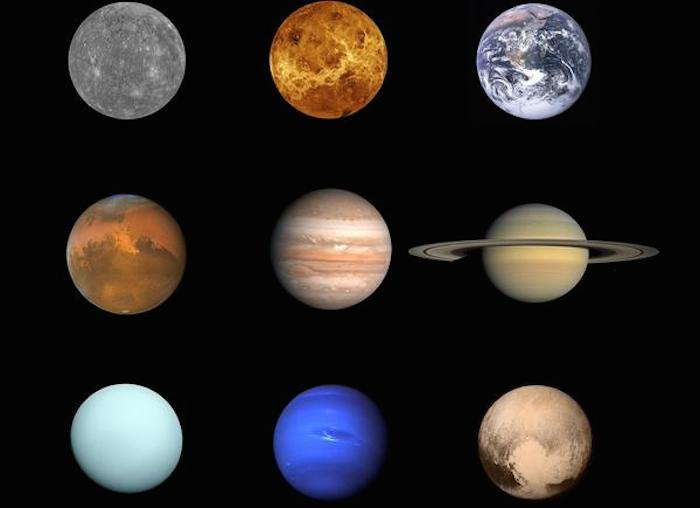

The astronomical union "reacted to the new data that there are many more planets in a rather unscientific way," Stern says, "by trying to legislate what is and isn't a planet — to keep the numbers small."
Resolution 5A lays out three requirements that must be met before something in our solar system can be classified as a planet:
First, it must orbit our star, the sun.
Second, a planet has to be round.
And third, and maybe most controversial, planets must be big enough that their gravity can clear debris, such as asteroids, out of their path.
"That's flawed for a couple of reasons," Stern says. For one thing, Jupiter and Earth both have asteroids in their orbital zones.
The other reason Stern hates this rule is that Pluto has a much bigger orbit than any other planet.
But the International Astronomical Union is unmoved.
Why Pluto Doesn't Fit
"Pluto is a dwarf planet. So be it — it's a classification," says Thierry Montmerle, the group's general secretary. "It's not a demotion or a promotion." He says Pluto clearly doesn't fit with the other planets.
"It's a very, very small planet; it's smaller than the moon," he says. Pluto also orbits at a funny angle compared to the other planets. And there are a whole lot of other Pluto-like things cluttering up the outer reaches of the solar system.
Regardless of the feelings among some scientists, Montmerle says the term "dwarf planet" has stuck. These days, textbooks, museums and planetariums all use the diminutive title. (Even NASA calls Pluto a dwarf planet, at least officially.)
"You may accept it, or not accept it, but it's there — it's there to last. There's no doubt about that," Montmerle says.
But Pluto mission leader Alan Stern still thinks the definition is wrong. All the Pluto-like planets at the edge of our solar system deserve to be called "planet" once again, he says. And if that means school children can no longer memorize them, so be it.
It's "so 20th century," Stern says, "to think of planets as something you should be able to name."
Quelle: npr
...
Update: 10.30 MESZ
.

Pluto’s bright, mysterious “heart” is rotating into view, ready for its close-up on close approach, in this image taken by New Horizons on July 12 from a distance of 1.6 million miles (2.5 million kilometers). It is the target of the highest-resolution images that will be taken during the spacecraft’s closest approach to Pluto on July 14. The intriguing “bulls-eye” feature at right is rotating out of view, and will not be seen in greater detail.
Image Credit: NASA/JHUAPL/SWRI
Last Updated: July 14, 2015
.

This graphic presents a view of Pluto and Charon as they would appear if placed slightly above Earth's surface and viewed from a great distance. Recent measurements obtained by New Horizons indicate that Pluto has a diameter of 2370 km, 18.5% that of Earth's, while Charon has a diameter of 1208 km, 9.5% that of Earth's.
Last Updated: July 14, 2015
.

Quelle: NASA
...
Update: 22.30 MESZ
.
NASA's Three-Billion-Mile Journey to Pluto Reaches Historic Encounter

Pluto nearly fills the frame in this image from the Long Range Reconnaissance Imager (LORRI) aboard NASA’s New Horizons spacecraft, taken on July 13, 2015 when the spacecraft was 476,000 miles (768,000 kilometers) from the surface. This is the last and most detailed image sent to Earth before the spacecraft’s closest approach to Pluto on July 14. The color image has been combined with lower-resolution color information from the Ralph instrument that was acquired earlier on July 13. This view is dominated by the large, bright feature informally named the “heart,” which measures approximately 1,000 miles (1,600 kilometers) across. The heart borders darker equatorial terrains, and the mottled terrain to its east (right) are complex. However, even at this resolution, much of the heart’s interior appears remarkably featureless—possibly a sign of ongoing geologic processes.
Credits: NASA/APL/SwRI
NASA’s New Horizons spacecraft is at Pluto.
After a decade-long journey through our solar system, New Horizons made its closest approach to Pluto Tuesday, about 7,750 miles above the surface -- roughly the same distance from New York to Mumbai, India – making it the first-ever space mission to explore a world so far from Earth.
“I’m delighted at this latest accomplishment by NASA, another first that demonstrates once again how the United States leads the world in space,” said John Holdren, assistant to the President for Science and Technology and director of the White House Office of Science and Technology Policy. “New Horizons is the latest in a long line of scientific accomplishments at NASA, including multiple missions orbiting and exploring the surface of Mars in advance of human visits still to come; the remarkable Kepler mission to identify Earth-like planets around stars other than our own; and the DSCOVR satellite that soon will be beaming back images of the whole Earth in near real-time from a vantage point a million miles away. As New Horizons completes its flyby of Pluto and continues deeper into the Kuiper Belt, NASA's multifaceted journey of discovery continues."
.

Members of the New Horizons science team react to seeing the spacecraft's last and sharpest image of Pluto before closest approach later in the day, Tuesday, July 14, 2015 at the Johns Hopkins University Applied Physics Laboratory in Laurel, Maryland.
Credits: NASA/Bill Ingalls
“The exploration of Pluto and its moons by New Horizons represents the capstone event to 50 years of planetary exploration by NASA and the United States," said NASA Administrator Charles Bolden. “Once again we have achieved a historic first. The United States is the first nation to reach Pluto, and with this mission has completed the initial survey of our solar system, a remarkable accomplishment that no other nation can match.”
Per the plan, the spacecraft currently is in data-gathering mode and not in contact with flight controllers at the Johns Hopkins University Applied Physical Laboratory (APL) in Laurel, Maryland. Scientists are waiting to find out whether New Horizons “phones home,” transmitting to Earth a series of status updates that indicate the spacecraft survived the flyby and is in good health. The “call” is expected shortly after 9 p.m. EDT tonight.
The Pluto story began only a generation ago when young Clyde Tombaugh was tasked to look for Planet X, theorized to exist beyond the orbit of Neptune. He discovered a faint point of light that we now see as a complex and fascinating world.
"Pluto was discovered just 85 years ago by a farmer's son from Kansas, inspired by a visionary from Boston, using a telescope in Flagstaff, Arizona,” said John Grunsfeld, associate administrator for NASA's Science Mission Directorate in Washington. "Today, science takes a great leap observing the Pluto system up close and flying into a new frontier that will help us better understand the origins of the solar system.”
New Horizons’ flyby of the dwarf planet and its five known moons is providing an up-close introduction to the solar system's Kuiper Belt, an outer region populated by icy objects ranging in size from boulders to dwarf planets. Kuiper Belt objects, such as Pluto, preserve evidence about the early formation of the solar system.
New Horizons principal investigator Alan Stern of the Southwest Research Institute (SwRI) in Boulder, Colorado, says the mission now is writing the textbook on Pluto.
"The New Horizons team is proud to have accomplished the first exploration of the Pluto system,” Stern said. “This mission has inspired people across the world with the excitement of exploration and what humankind can achieve.”
New Horizons’ almost 10-year, three-billion-mile journey to closest approach at Pluto took about one minute less than predicted when the craft was launched in January 2006. The spacecraft threaded the needle through a 36-by-57 mile (60 by 90 kilometers) window in space -- the equivalent of a commercial airliner arriving no more off target than the width of a tennis ball.
Because New Horizons is the fastest spacecraft ever launched – hurtling through the Pluto system at more than 30,000 mph, a collision with a particle as small as a grain of rice could incapacitate the spacecraft. Once it reestablishes contact Tuesday night, it will take 16 months for New Horizons to send its cache of data – 10 years’ worth -- back to Earth.
New Horizons is the latest in a long line of scientific accomplishments at NASA, including multiple rovers exploring the surface of Mars, the Cassini spacecraft that has revolutionized our understanding of Saturn and the Hubble Space Telescope, which recently celebrated its 25th anniversary. All of this scientific research and discovery is helping to inform the agency’s plan to send American astronauts to Mars in the 2030’s.
“After nearly 15 years of planning, building, and flying the New Horizons spacecraft across the solar system, we’ve reached our goal,” said project manager Glen Fountain at APL. “The bounty of what we’ve collected is about to unfold.”
APL designed, built and operates the New Horizons spacecraft and manages the mission for NASA’s Science Mission Directorate. SwRI leads the mission, science team, payload operations and encounter science planning. New Horizons is part of NASA’s New Frontiers Program, managed by the agency’s Marshall Space Flight Center in Huntsville, Alabama.
Quelle: NASA
---
Pluto and Charon Shine in False Color

New Horizons has obtained impressive new images of Pluto and its large moon Charon that highlight their compositional diversity. These are not actual color images of Pluto and Charon—they are shown here in exaggerated colors that make it easy to note the differences in surface material and features on each planetary body.
The images were obtained using three of the color filters of the “Ralph” instrument on July 13 at 3:38 am EDT. New Horizons has seven science instruments on board the spacecraft—including “Ralph” and “Alice”, whose names are a throwback to the “Honeymooners,” a popular 1950s sitcom.
“These images show that Pluto and Charon are truly complex worlds. There's a whole lot going on here,” said New Horizons co-investigator Will Grundy, Lowell Observatory, Flagstaff, Arizona. “Our surface composition team is working as fast as we can to identify the substances in different regions on Pluto and unravel the processes that put them where they are.”
The color data helps scientists understand the molecular make-up of ices on the surfaces of Pluto and Charon, as well as the age of geologic features such as craters. They can also tell us about surface changes caused by space “weather,” such as radiation.
The new color images reveal that the “heart” of Pluto actually consists of two remarkably different-colored regions. In the false-color image, the heart consists of a western lobe shaped like an ice cream cone that appears peach color in this image. A mottled area on the right (east) side looks bluish. A mid-latitude band appears in shades ranging from pale blue through red. Even within the northern polar cap, in the upper part of the image, various shades of yellow-orange indicate subtle compositional differences. This image was obtained using three of the color filters of the Ralph instrument on July 13 at 3:38 am EDT and received on the ground on at 12:25 pm.
Charon is Just as Colorful
The surface of Charon is viewed using the same exaggerated color. The red on the dark northern polar cap of Charon is attributed to hydrocarbon and other molecules, a class of chemical compounds called tholins. The mottled colors at lower latitudes point to the diversity of terrains on Charon. This image was obtained using three of the color filters of the Ralph instrument on July 13 at 3:38 am EDT and received on the ground on at 12:25 pm.
“We make these color images to highlight the variety of surface environments present in the Pluto system,” said Dennis Reuter, co-investigator with the New Horizons Composition Team. “They show us in an intuitive way that there is much still to learn from the data coming down.”
Due to the three-billion-mile distance to Pluto, data takes 4 ½ hours to come to Earth, even at the speed of light. It will take 16 months for all of New Horizons’ science data to be received, and the treasure trove from this mission will be studied for decades to come.
Image Caption: Pluto and Charon in False Color Show Compositional Diversity
This July 13, 2015, image of Pluto and Charon is presented in false colors to make differences in surface material and features easy to see. It was obtained by the Ralph instrument on NASA's New Horizons spacecraft, using three filters to obtain color information, which is exaggerated in the image. These are not the actual colors of Pluto and Charon, and the apparent distance between the two bodies has been reduced for this side-by-side view.
The image reveals that the bright heart-shaped region of Pluto includes areas that differ in color characteristics. The western lobe, shaped like an ice-cream cone, appears peach color in this image. A mottled area on the right (east) appears bluish. Even within Pluto's northern polar cap, in the upper part of the image, various shades of yellow-orange indicate subtle compositional differences.
The surface of Charon is viewed using the same exaggerated color. The red on the dark northern polar cap of Charon is attributed to hydrocarbon materials including a class of chemical compounds called tholins. The mottled colors at lower latitudes point to the diversity of terrains on Charon.
This image was taken at 3:38 a.m. EDT on July 13, one day before New Horizons’ closest approach to Pluto.
Image Credit: NASA/APL/SwRI
At 7:49 AM EDT on Tuesday, July 14 New Horizons sped past Pluto at 30,800 miles per hour (49,600 kilometers per hour), with a suite of seven science instruments. As planned, New Horizons went incommunicado as it hurtled through the Pluto-Charon system busily gathering data. The New Horizons team will breathe a sigh of relief when New Horizons “phones home” at approximately 9:02 p.m. EDT on July 14. The mission to the icy dwarf planet completes the initial reconnaissance of the solar system.
Quelle: NASA
---

NASA Celebrates New Horizons' Closest Approach to Pluto
Share on facebook Share on twitter Share on google_plusone_share Share on pinterest_share More Sharing Services
Guests and New Horizons team members countdown to the spacecraft's closest approach to Pluto, Tuesday, July 14, 2015.
Quelle: NASA
---


Quelle: NASA
-
Update: 15.07.2015 / 11.00 MESZ
.
Senden wir eine Lander zu Pluto? Es wird definitiv in den Sinn kommen
LAUREL, Md. — Alan Stern, the New Horizons principal investigator, made clear today that he has already given considerable thought about the kind of lander he would like to send to the Pluto system.
“I’ve been thinking about the next thing to do,” Stern told SpaceNews staff writer Dan Leone. Instead of sending another orbiter in one mission and a lander in another, Stern proposed designing one vehicle that can serve both roles.
Stern’s concept would combine the benefits of a lander and an orbiter. If a lander were placed on the Pluto-facing half of Charon, it would be able to continually observe the dwarf planet and its other moons. The lander might also be able to conduct experiments on Charon’s surface.
“So, it’s like a hyper orbiter if you put a lander on Charon,” Stern said.
Charon will get some attention from the New Horizons spacecraft as it flies through the Pluto system. The spacecraft will observe the moon to further understand its geology and its chemical composition.
But the “hyper orbiter” is far from becoming a reality. “I’ve just been thinking about it myself to be honest,” Stern said.
Quelle: SN
---
Update: 11.30 MESZ
.
NASA's New Horizons ‘Phones Home’ Safe after Pluto Flyby

New Horizons Flight Controllers celebrate after they received confirmation from the spacecraft that it had successfully completed the flyby of Pluto, Tuesday, July 14, 2015 in the Mission Operations Center (MOC) of the Johns Hopkins University Applied Physics Laboratory (APL), Laurel, Maryland.
Credits: NASA/Bill Ingalls
.
The call everyone was waiting for is in. NASA’s New Horizons spacecraft phoned home just before 9 p.m. EDT Tuesday to tell the mission team and the world it had accomplished the historic first-ever flyby of Pluto.
“I know today we’ve inspired a whole new generation of explorers with this great success, and we look forward to the discoveries yet to come,” NASA Administrator Charles Bolden said. “This is a historic win for science and for exploration. We’ve truly, once again raised the bar of human potential.”
The preprogrammed “phone call” -- a 15-minute series of status messages beamed back to mission operations at the Johns Hopkins University Applied Physics Laboratory in Maryland through NASA’s Deep Space Network -- ended a very suspenseful 21-hour waiting period. New Horizons had been instructed to spend the day gathering the maximum amount of data, and not communicating with Earth until it was beyond the Pluto system.
“With the successful flyby of Pluto we are celebrating the capstone event in a golden age of planetary exploration,” said John Grunsfeld, associate administrator for NASA's Science Mission Directorate in Washington. “While this historic event is still unfolding --with the most exciting Pluto science still ahead of us -- a new era of solar system exploration is just beginning. NASA missions will unravel the mysteries of Mars, Jupiter, Europa and worlds around other suns in the coming years."
.

Pluto is the first Kuiper Belt object visited by a mission from Earth. New Horizons will continue on its adventure deeper into the Kuiper Belt, where thousands of objects hold frozen clues as to how the solar system formed.
“Following in the footsteps of planetary exploration missions such as Mariner, Pioneer and Voyager, New Horizons has triumphed at Pluto,” says New Horizons principal investigator Alan Stern of the Southwest Research Institute in Boulder, Colorado. “The New Horizons flyby completes the first era of planetary reconnaissance, a half century long endeavor that will forever be a legacy of our time."
New Horizons is collecting so much data it will take 16 months to send it all back to Earth.
“On behalf of everyone at the Johns Hopkins University Applied Physics Laboratory, I want to congratulate the New Horizons team for the dedication, skill, creativity, and determination they demonstrated to reach this historic milestone,” said APL Director Ralph Semmel. “We are proud to be a part of a truly amazing team of scientists, engineers, and mission operations experts from across our nation who worked tirelessly to ensure the success of this mission.”
APL designed, built and operates the New Horizons spacecraft and manages the mission for NASA’s Science Mission Directorate. SwRI leads the mission, science team, payload operations and encounter science planning. New Horizons is part of NASA’s New Frontiers Program, managed by the agency’s Marshall Space Flight Center in Huntsville, Alabama.
Quelle: NASA
---
Update: 12.00 MESZ
.
Wir sind komplett!

Quelle: Alex Parker
-
Update: 21.45 MESZ
.
Charon’s Surprising Youthful and Varied Terrain

Remarkable new details of Pluto’s largest moon Charon are revealed in this image from New Horizons’ Long Range Reconnaissance Imager (LORRI), taken late on July 13, 2015 from a distance of 289,000 miles (466,000 kilometers).
A swath of cliffs and troughs stretches about 600 miles (1,000 kilometers) from left to right, suggesting widespread fracturing of Charon’s crust, likely a result of internal processes. At upper right, along the moon’s curving edge, is a canyon estimated to be 4 to 6 miles (7 to 9 kilometers) deep.
Mission scientists are surprised by the apparent lack of craters on Charon. South of the moon’s equator, at the bottom of this image, terrain is lit by the slanting rays of the sun, creating shadows that make it easier to distinguish topography. Even here, however, relatively few craters are visible, indicating a relatively young surface that has been reshaped by geologic activity.
In Charon’s north polar region, a dark marking prominent in New Horizons’ approach images is now seen to have a diffuse boundary, suggesting it is a thin deposit of dark material. Underlying it is a distinct, sharply bounded, angular feature; higher resolution images still to come are expected to shed more light on this enigmatic region.
The image has been compressed to reduce its file size for transmission to Earth. In high-contrast areas of the image, features as small as 3 miles (5 kilometers) across can be seen. Some lower-contrast detail is obscured by the compression of the image, which may make some areas appear smoother than they really are. The uncompressed version still resides in New Horizons’ computer memory and is scheduled to be transmitted at a later date.
The image has been combined with color information obtained by New Horizons’ Ralph instrument on July 13.
New Horizons traveled more than three billion miles over nine-and-a-half years to reach the Pluto system.
Image Credit: NASA-JHUAPL-SwRI
Last Updated: July 15, 2015
Editor: Tricia Talbert
---
4922 Views
